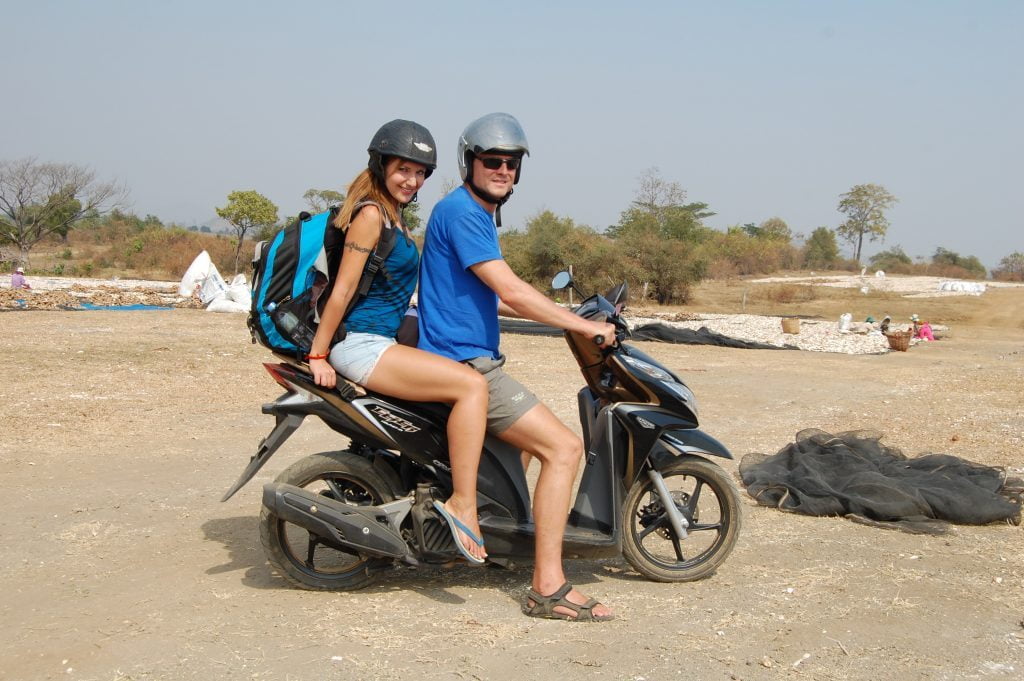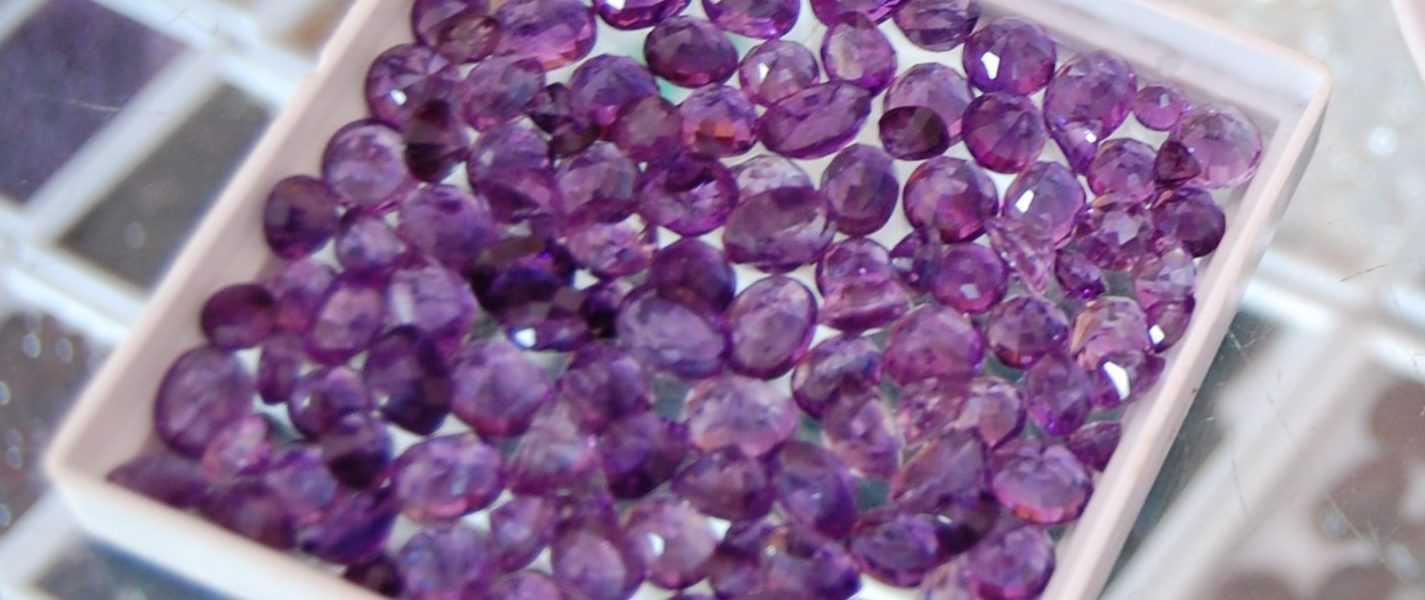Pailin, Cambodia is a small province located in the far west of Cambodia. Geographically speaking, the most prominent feature is the Cardamom Mountain range which lies between Pailin Province and Thailand.
The Cardamom mountains hold extensive natural resources and also wildlife. Natural resources include forests for logging and large deposits of Pailin gemstones. Plus, tigers can still be encountered living in the wild!
The city of Pailin, Cambodia is a small town with a very authentic wild west feel to it. Indeed, gem shops line the streets selling both refined and unrefined gemstones. As a result, Pailin gemstone shopping is a unique travel experience for visitors to buy some affordable local gems.
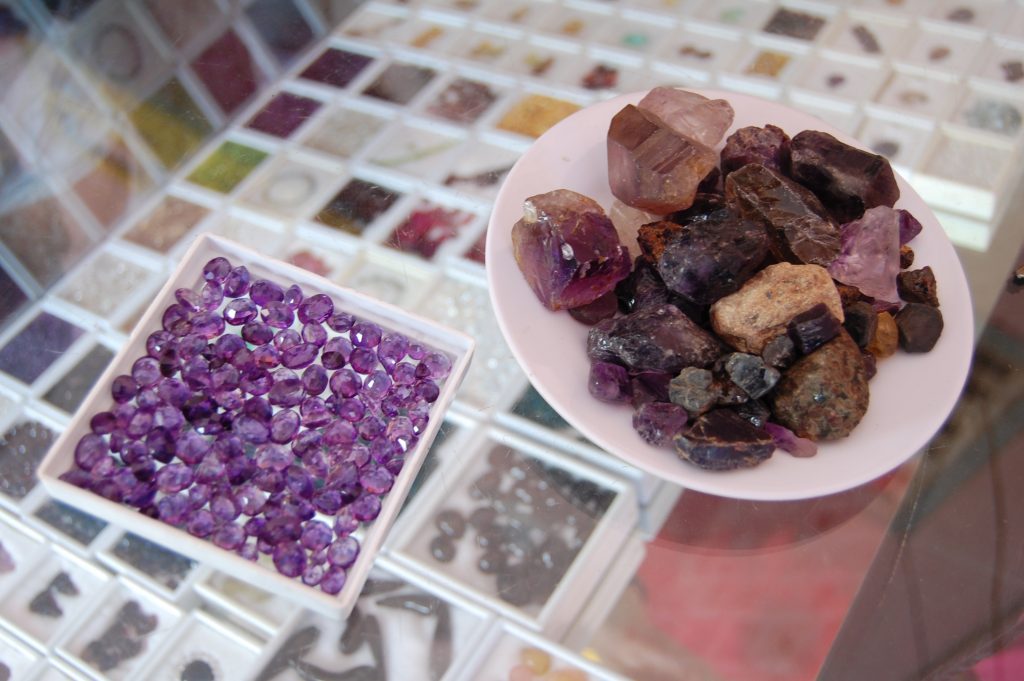
Khmer Rouge Stronghold in Pailin, Cambodia
Pailin was the focal point of the Khmer Rouge during Cambodia’s civil war. Indeed, the Khmer Rouge funded their successful military campaign by exploiting the Pailin gemstones and logging. Additionally, after the fall of the regime in 1979, Pailin Province remained a Khmer Rouge stronghold for nearly 2 decades.
Unfortunately, the Khmer Rouge infamously oversaw Cambodia’s genocide that occurred in the killing fields. Additionally, failed agricultural policies resulted in the death of millions due to starvation.
Pailin, Cambodia was a strong hold of the Khmer Rouge during their entire occupation and continued to be after their downfall. As a result, it was a safe haven for many of the Khmer Rouge leaders who were wanted to stand trial for war crimes.
Indeed, it is estimated that 70% of males aged 70 years or more currently living in Pailin Province had served as regular army troops under the Khmer Rouge.
Pailin, Cambodia Jungle Trekking
Pristine jungle still exists in the Cardamom Mountains and we deemed that this would be well worth exploring. Fortunately, we didn’t encounter any man eating tigers or landmines.
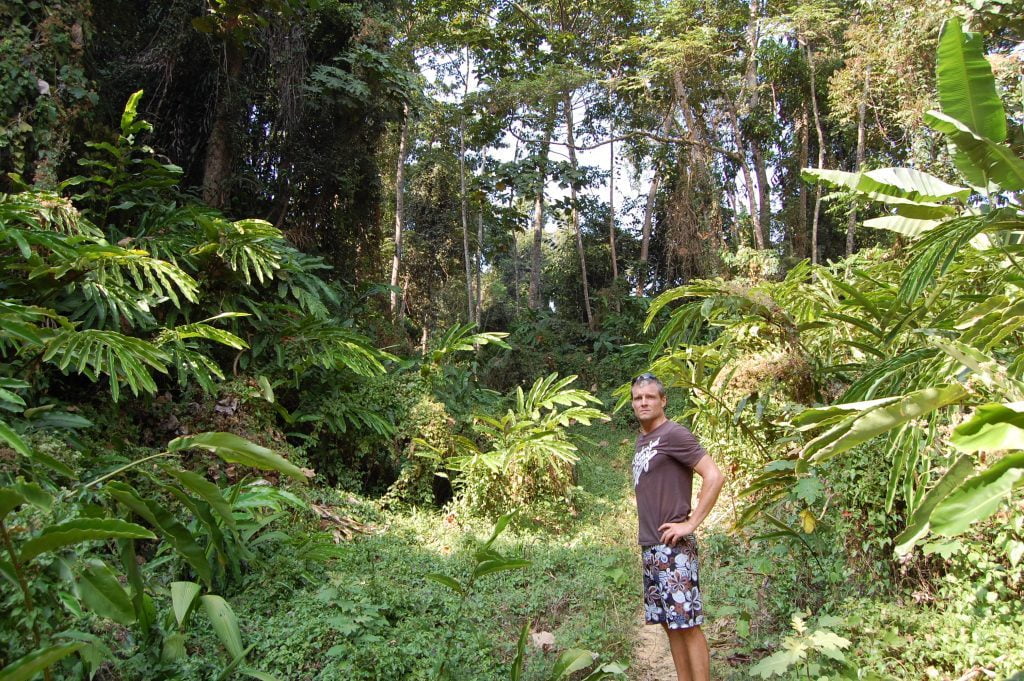
The jungle was a destination in itself. We both wanted to venture out and see what it was really like. We did come across a few small waterfalls but they were less than spectacular due to it being the dry season.
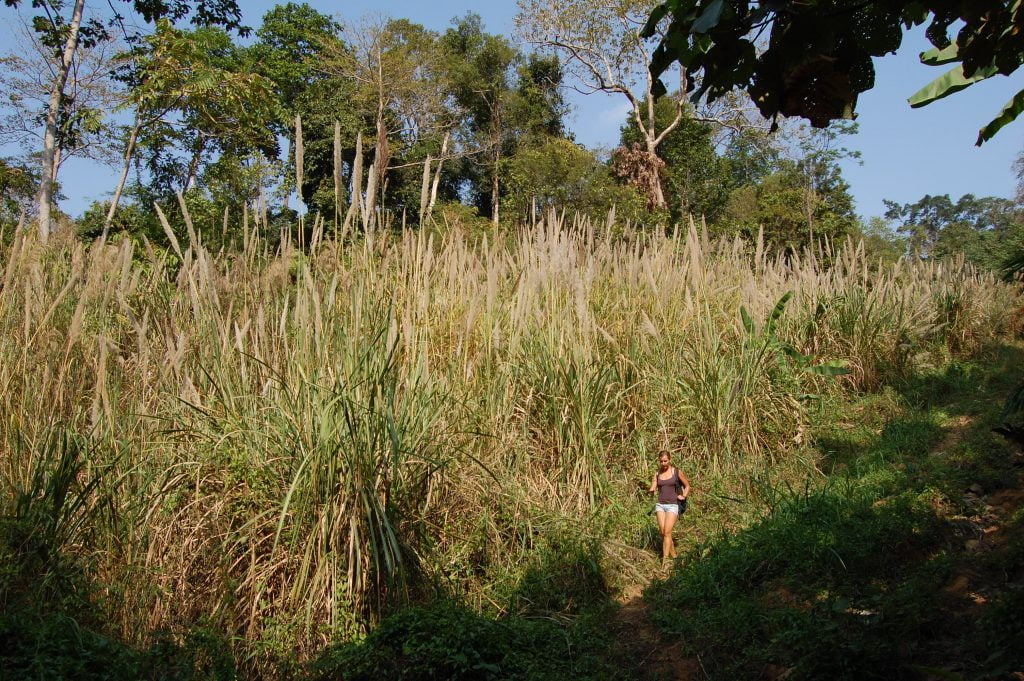
The Best Pailin, Cambodia Travel Guide
Due to the obscurity of the area it was not very accommodating if you don’t already know your way around. Therefore, we found a local guide in order to experience the best of our stay in Pailin. We would be in luck because we found the perfect guy for the job.
Prospecting for Pailin Gemstones
First, we went to visit a local mining camp. The Pailin gemstone mining operations range from fully mechanized operations to solo miners working by hand.
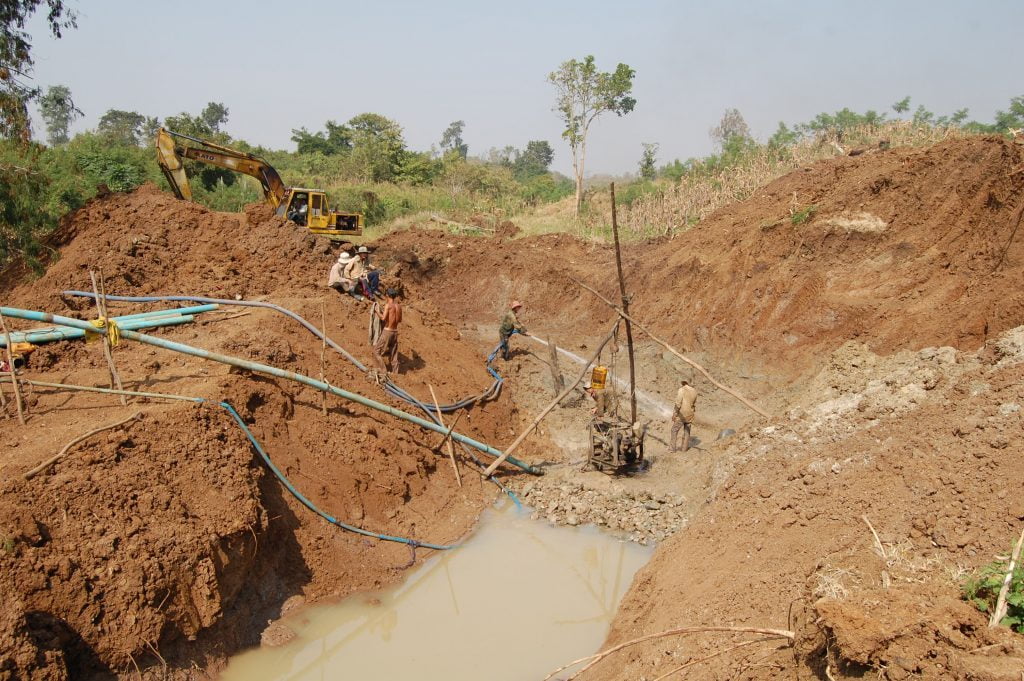
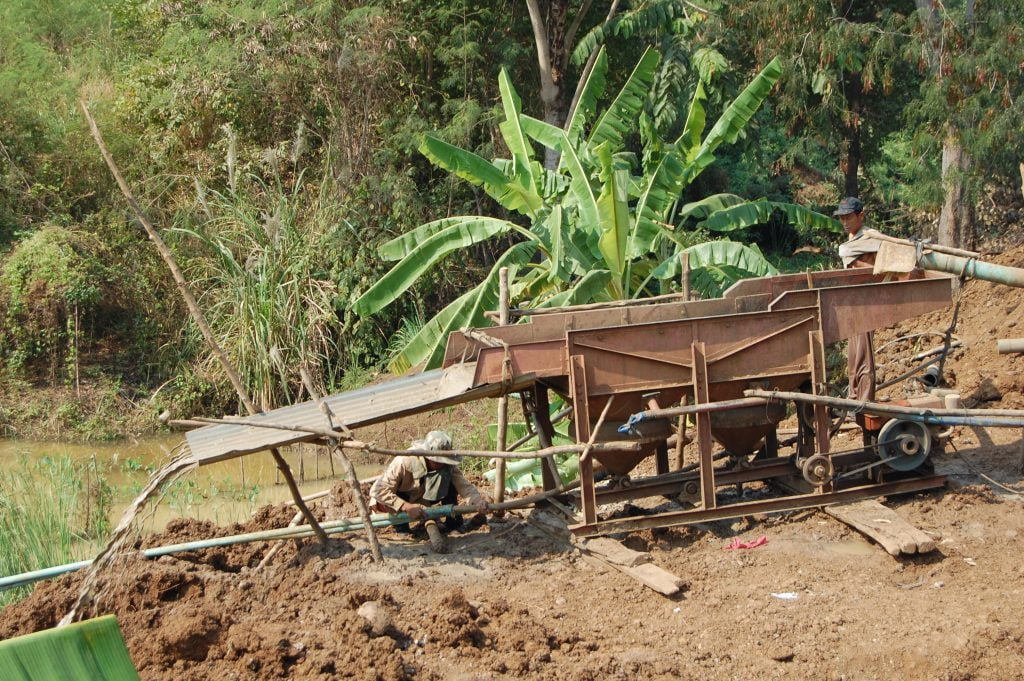
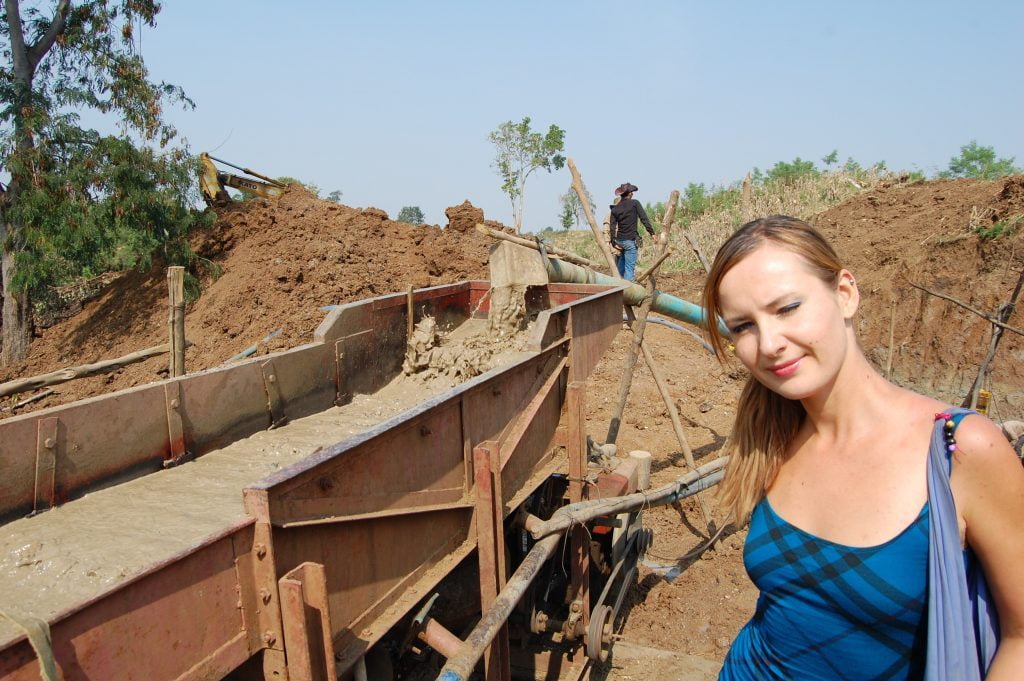
After reviewing the upstream operations we ventured over to the camp headquarters where we were able to view the payload for the last few days.
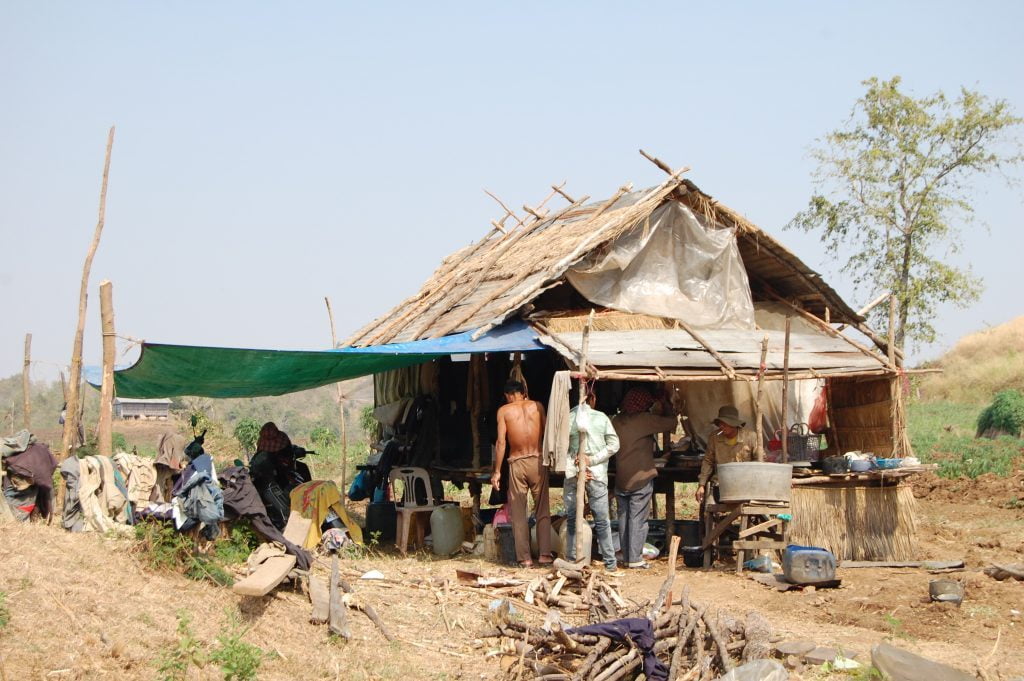
Unfortunately, modern day prospecting is not as rewarding as it used to be. The Khmer Rouge regime had scoured the entire area for Pailin gemstones in order to fund their military and government. As a result, the best mining locations were running dry.

Panning for Pailin Gemstones
Mining the old fashioned way is also still practiced in Pailin, Cambodia. Our guide informed us that they do still get lucky on occasion. Fortunately, the Khmer Rouge was not able to find every large gemstone hidden in the rivers.
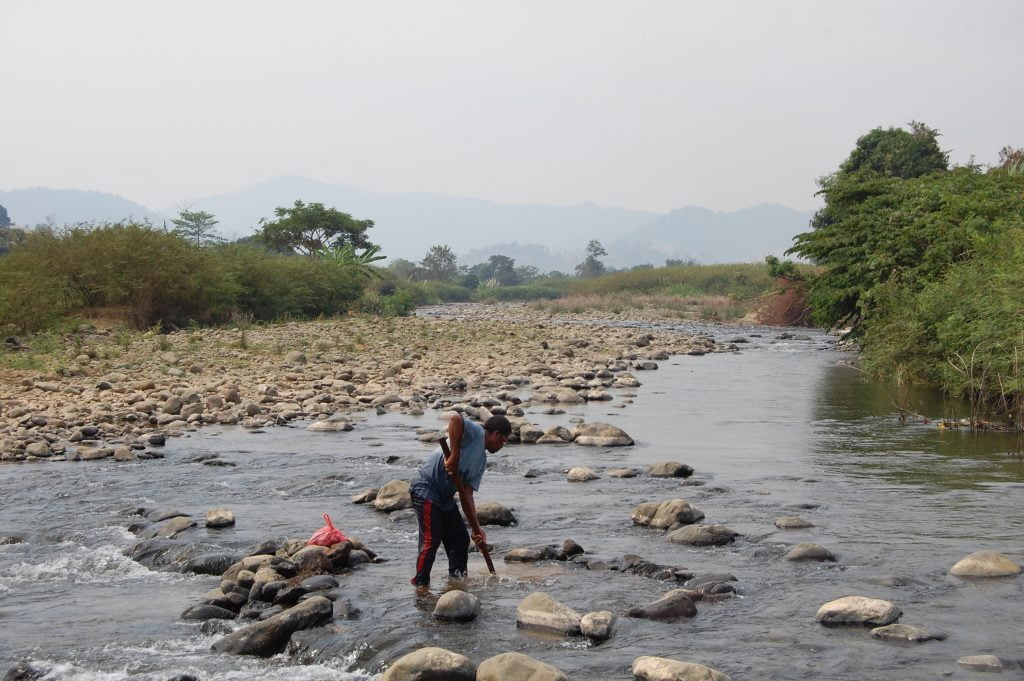
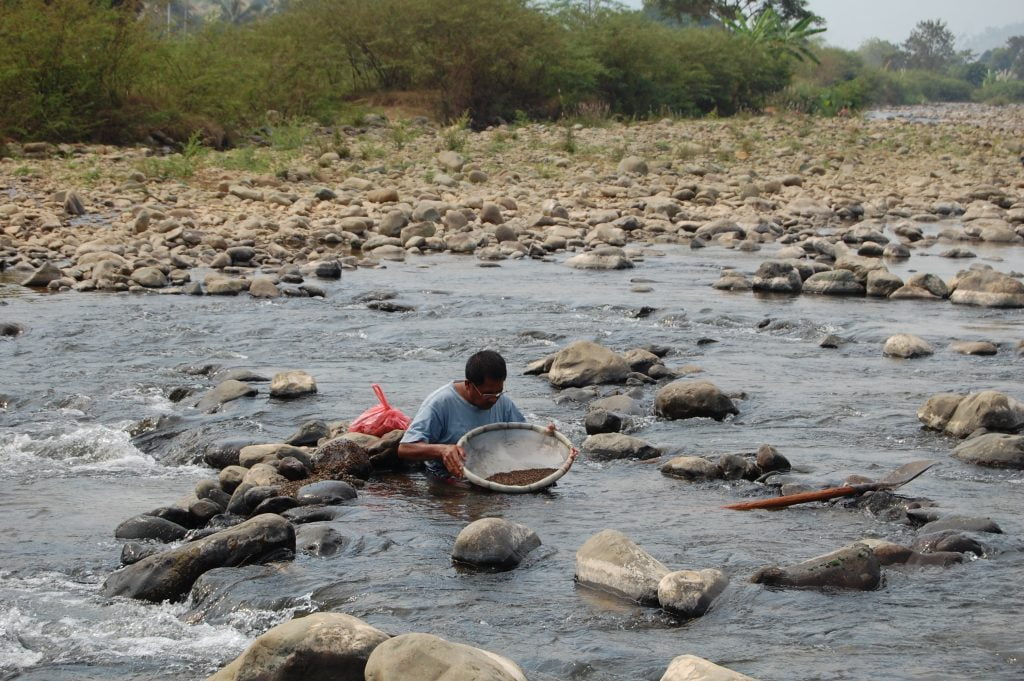
Landmines in Pailin, Cambodia
The fields and foothills surrounding Pailin served as battlefields during the war. Unfortunately, these areas still contain an abundance of unexploded landmines. As in Laos and other areas with unexploded ordnance, they are inevitably set off by farmers and civilians resulting in death and serious injury. This situation remains a harsh reality throughout the entire Pailin Province.
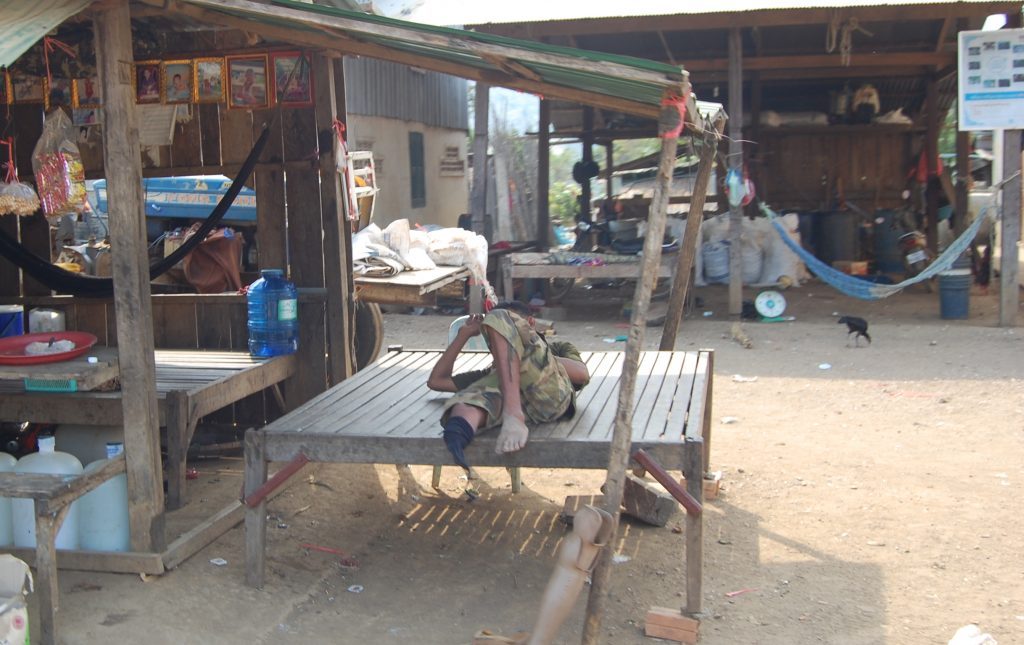
Agriculture in Pailin, Cambodia
Major agricultural products in Pailin include coffee and also the cassava root. Originally, neither plant was native to SE Asia. However, the introduction of these two staple crops into SE Asia is a lasting legacy of the European colonists. Unfortunately, the devastation of the Vietnam War was also their doing.
Coffee
Next we went to visit a coffee plantation located on an extensive estate. According to our guide, the property was owned by the daughter of a high ranking government official.
Inevitably, jungle must be cleared for cultivation. However, this has reached extreme proportions. Unfortunately, the level of primary forest cover in Cambodia has dropped from over 70% in 1969 to only 3% in 2007. The original primary forest has either been logged extensively and/or cleared for agriculture.
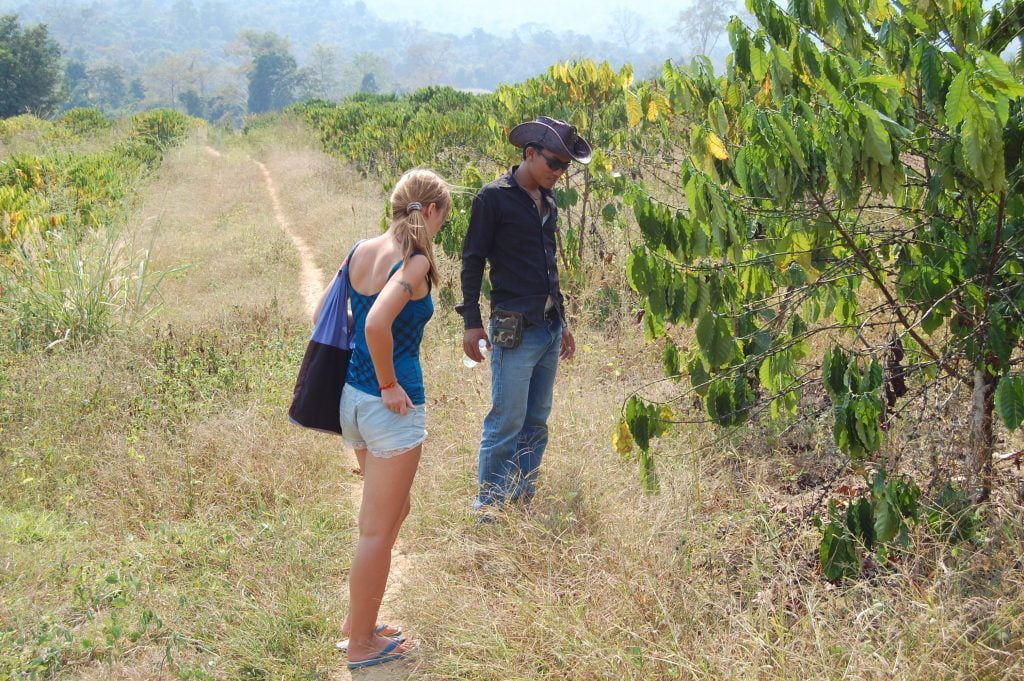
There was a drought in effect which had been having an adverse effect on the crop. However, we were still able to view some of the beans. Coffee cultivated in Pailin, Cambodia is very good, although growing conditions are not as optimal when compared to the Bolaven Plateau in Laos.
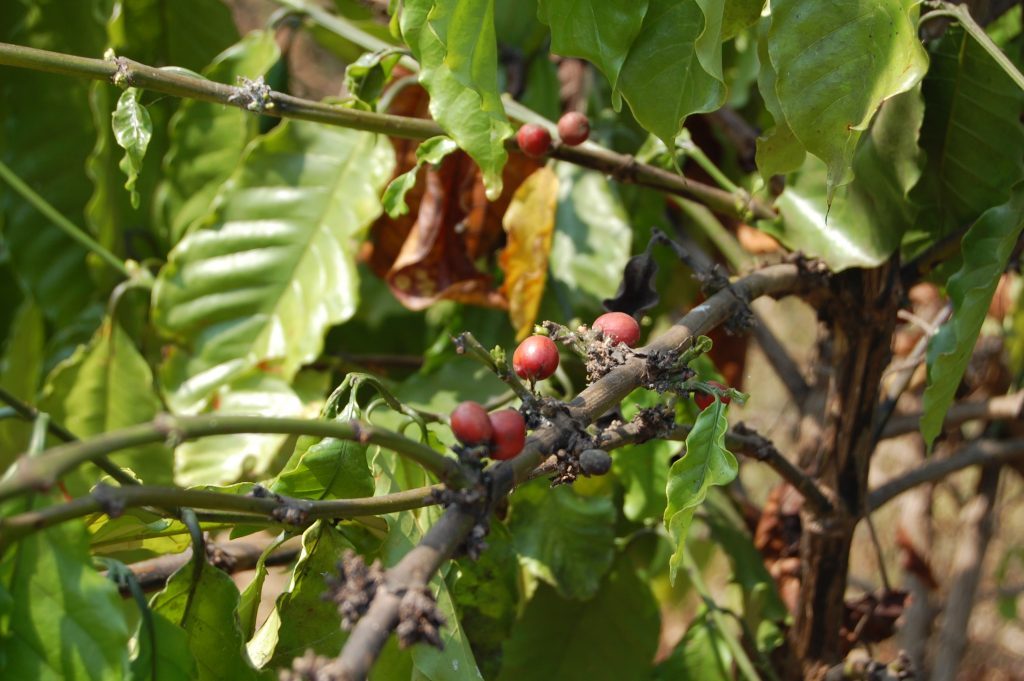
Cassava Root
Cassava root is native to South America where it is still cultivated and remains an indispensable part of the local diet. In present day, cassava is also cultivated extensively in Asia.
In addition to being a basic food source, the cassava is also the source of tapioca which is a popular ingredient in pudding. However, the raw cassava root is actually poisonous if it is not processed correctly.
There are several effective processing techniques. One common technique is to dry the roots and grind them up into flour. Paste is created by mixing the cassava flour with water, then the paste is spread thinly over a blanket and left in the shade for a minimum of 5 hours. As a result, 85% of the poison evaporates into the atmosphere and it is then safe to eat.
In the photo below, the cassava is being cut up and left in the sun to dry. Afterwards, it can be ground up into flour and processed according to the method described above.
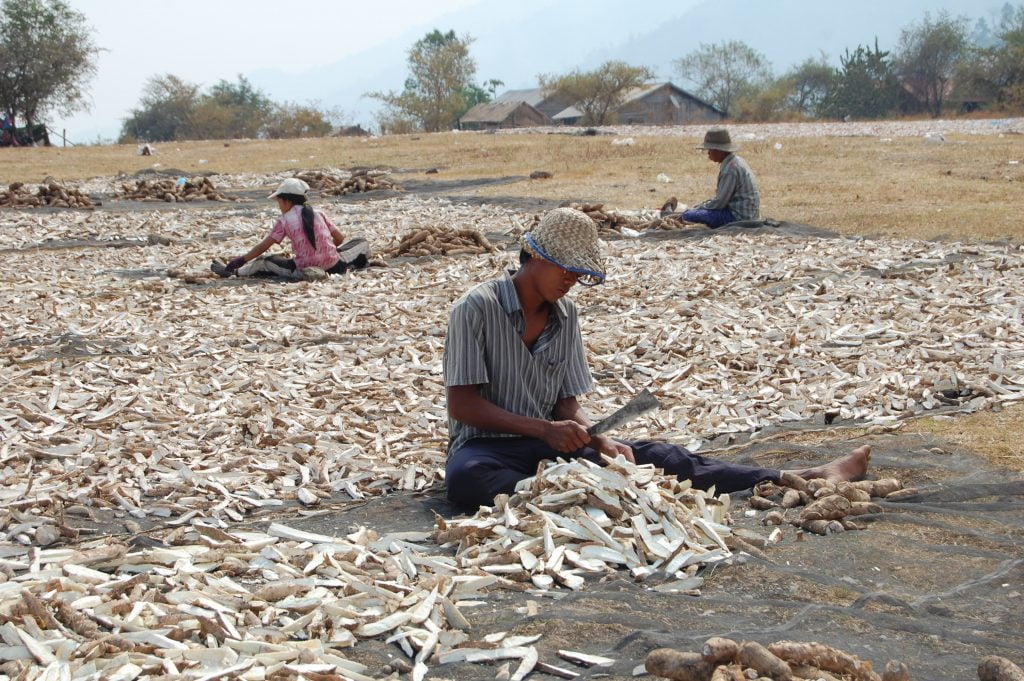
Returning to Battambang
This concluded our visit to Pailin, Cambodia and we would now be returning to Battambang and then continuing onward to Phnom Penh.
Below is a photograph of our method of transportation throughout Battambang and Pailin provinces. We also traveled throughout much of Laos using the same method.
